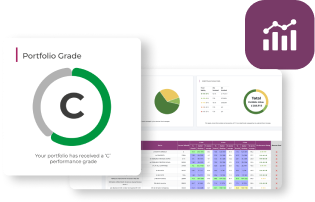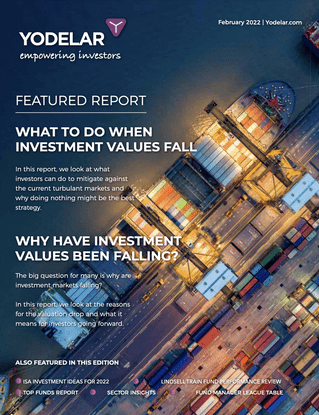-
To take risk in the right way, investors must be able to stand it, understand it, demand it, and command it.
-
Standing it means recognising both your emotional tolerance and financial capacity to withstand market volatility.
-
Understanding it requires knowing how your portfolio behaves in different conditions and how diversified it truly is.
-
Demanding it is about taking only the amount of risk your long-term goals require — no more, no less.
-
Commanding it involves disciplined oversight, regular rebalancing, and ensuring your portfolio remains aligned with your intended risk level.
Every investor has heard the phrase “no risk, no reward”, but few fully appreciate how fundamental that truth is to long term success. In a world where headlines promise easy profits and markets move rapidly, it is worth remembering a simple rule: higher potential returns always come with higher levels of risk.
Recent market cycles have proved the point. Strong periods of growth have often been followed by abrupt corrections, leaving some investors overexposed not because they took risk, but because they misunderstood it. The challenge is not avoiding risk but taking it in the right way.
At the core of successful investing lies a simple question: Are you taking the right amount of risk for your goals?
Getting that balance right depends on four principles: standing it, understanding it, demanding it, and commanding it.
1. Standing It – The Emotional and Financial Test
The first step is knowing whether you can stand risk, both emotionally and financially. Psychometric questionnaires can provide a useful guide, but they are only a starting point. Investors should ask themselves how they would feel if their portfolio fell sharply for a period.
Emotional tolerance is one part of the equation. The other is risk capacity, which is your financial ability to absorb losses without jeopardising long term plans. A well constructed financial plan should test different market scenarios to ensure your portfolio can endure downturns while still achieving its objectives.
Too often, portfolios are based on a single questionnaire score rather than a true understanding of what investors can realistically afford to lose. The right level of risk should feel challenging but never unmanageable.
2. Understanding It – Knowing What You Own and Why
Once you can stand risk, you must understand it. Every investment carries uncertainty, and even professional managers cannot predict short term movements. What matters is understanding how your portfolio behaves in different conditions.
Equities can deliver long term growth but fall heavily in downturns. Bonds usually provide greater stability but can decline when interest rates rise. Diversification, achieved by spreading investments across asset classes, sectors, and regions, helps smooth returns but cannot remove risk completely.
It is also important to distinguish between volatility and loss. Market fluctuations are normal, and what harms returns most is reacting emotionally, selling at the wrong time, or holding portfolios that are misaligned with true tolerance.
3. Demanding It – Taking Only the Risk You Need
Not all investors need to take substantial risk. If your goals can be met with secure or lower risk assets, there is little value in chasing higher returns. However, taking too little risk can be just as damaging, particularly for investors seeking growth that outpaces inflation.
A sound financial plan identifies how much risk is necessary to achieve your aims. Exposure should be intentional, not accidental. Taking more risk than required invites unnecessary volatility, while taking too little risks falling short of your long term needs.
The most effective portfolios take just enough risk to reach their objectives, and no more.
4. Commanding It – Managing Risk with Discipline
Risk can never be eliminated, but it can be commanded. That does not mean predicting markets or engineering risk away. It means managing it with discipline. Strategic asset allocation, regular rebalancing, and consistent oversight are essential to keeping a portfolio aligned with its intended risk level.
Without such controls, portfolios can drift unintentionally, especially after periods of strong equity performance. Over time, this drift can expose investors to greater risk than intended.
At Yodelar and MKC Invest, disciplined risk management is built into every portfolio. Each model is maintained within a defined risk band using Dynamic Planner’s framework, ensuring portfolios remain aligned with the agreed level of risk even as markets evolve. This approach helps to deliver a smoother investment journey and reduces the likelihood of unpleasant surprises.
How a Portfolio Analysis Helps You Understand Risk
Even experienced investors can struggle to gauge how much risk they are truly taking. A portfolio might appear well balanced on the surface, yet a closer look often reveals heavy concentration in certain sectors or overlapping holdings that reduce diversification.
A professional portfolio analysis provides an independent assessment of how your investments are positioned and how they have performed relative to their sector averages. It identifies whether your portfolio is appropriately diversified and whether its exposure, for example to technology or US equities, remains suitable for your goals and risk level.
Our team offers a free, no obligation portfolio review that benchmarks your existing funds against their sector averages, highlights duplication or inefficiency, and evaluates overall performance quality. It is a straightforward way to see how efficiently your portfolio is structured and whether your current risk exposure supports your objectives.
The Investor’s Role in Getting Risk Right
The most important factor in getting risk right is not the market or the fund manager, but the investor’s own clarity of purpose. Risk should not be viewed as something to fear, but as something to understand, manage, and use effectively. The investors who take the time to understand their goals, tolerance, and capacity for risk are those most likely to achieve consistent, long term success.
A financial planner plays a crucial role in this process, helping investors define what they are aiming to achieve, assess how much risk they can comfortably and financially sustain, and establish the level of exposure required to meet their objectives. Once that framework is in place, an investment manager can apply it through disciplined portfolio construction, continuous oversight, and regular rebalancing.
Investors who maintain this balance tend to achieve more stable outcomes over time. The key is not to eliminate risk, but to take the right amount and manage it intelligently. Risk is not the enemy of success; it is the cost of opportunity. When managed with structure and discipline, it becomes the mechanism through which long term goals are achieved.
How We Help Investors Get Risk Right
Getting risk right is not a one-time task but a continuous process. Markets change, fund performance shifts, and even well-constructed portfolios can drift from their original design. In today’s fast-moving investment environment, relying on static fund lists or outdated assumptions is no longer sufficient. Regular reviews are essential to ensure your portfolio continues to reflect both your objectives and your tolerance for risk.
Insight, however, is only part of the equation. The real test of effective risk management lies in how efficiently adjustments can be made when conditions change. This is where the structure of portfolio management becomes critical. A discretionary mandate allows professional managers to act decisively, making timely adjustments to keep portfolios aligned with each investor’s agreed risk level and goals.
Following Yodelar’s merger with MKC Wealth, clients now benefit from portfolios managed on a discretionary basis by MKC Invest, a discretionary fund management firm within the MKC Group. Each MKC Invest portfolio is built around high-quality diversification, clear risk parameters, and continuous oversight. This ensures portfolios remain balanced, disciplined, and aligned with investor objectives as markets evolve.
If you are unsure whether your portfolio still reflects your intended level of risk, or whether drift has gradually altered its structure, a portfolio analysis can provide valuable clarity. Book your free review today and take the first step towards ensuring your investments are effectively managed for long-term success.
















